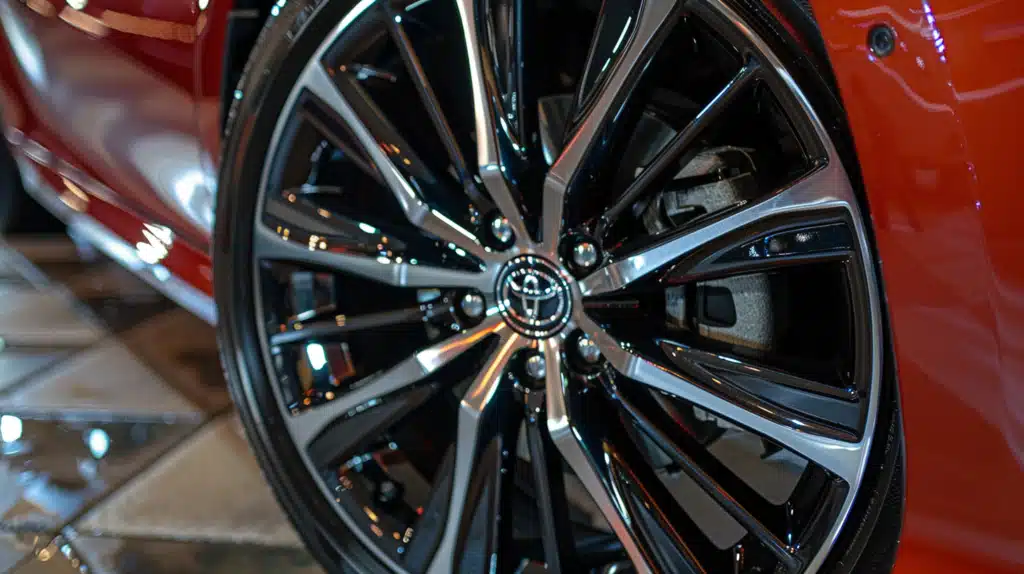Choosing the right wheels for my Toyota Camry has been an important part of improving both how it looks and how it drives.
But it wasn’t easy at first-I quickly realized that understanding the wheel bolt pattern is essential to finding wheels that actually fit.
In this post, I’ll walk you through how I figured out my Camry’s wheel bolt pattern, so you can avoid uncertainty and make a confident choice for your own vehicle.
I’ll explain what a wheel bolt pattern is, why it’s important, and how you can measure it with accuracy.
I’ll also share some of the most common bolt patterns Toyota uses on different Camry models, so you can more easily identify what works best for your car.
Key Considerations for Bolt Patterns in Toyota Camry
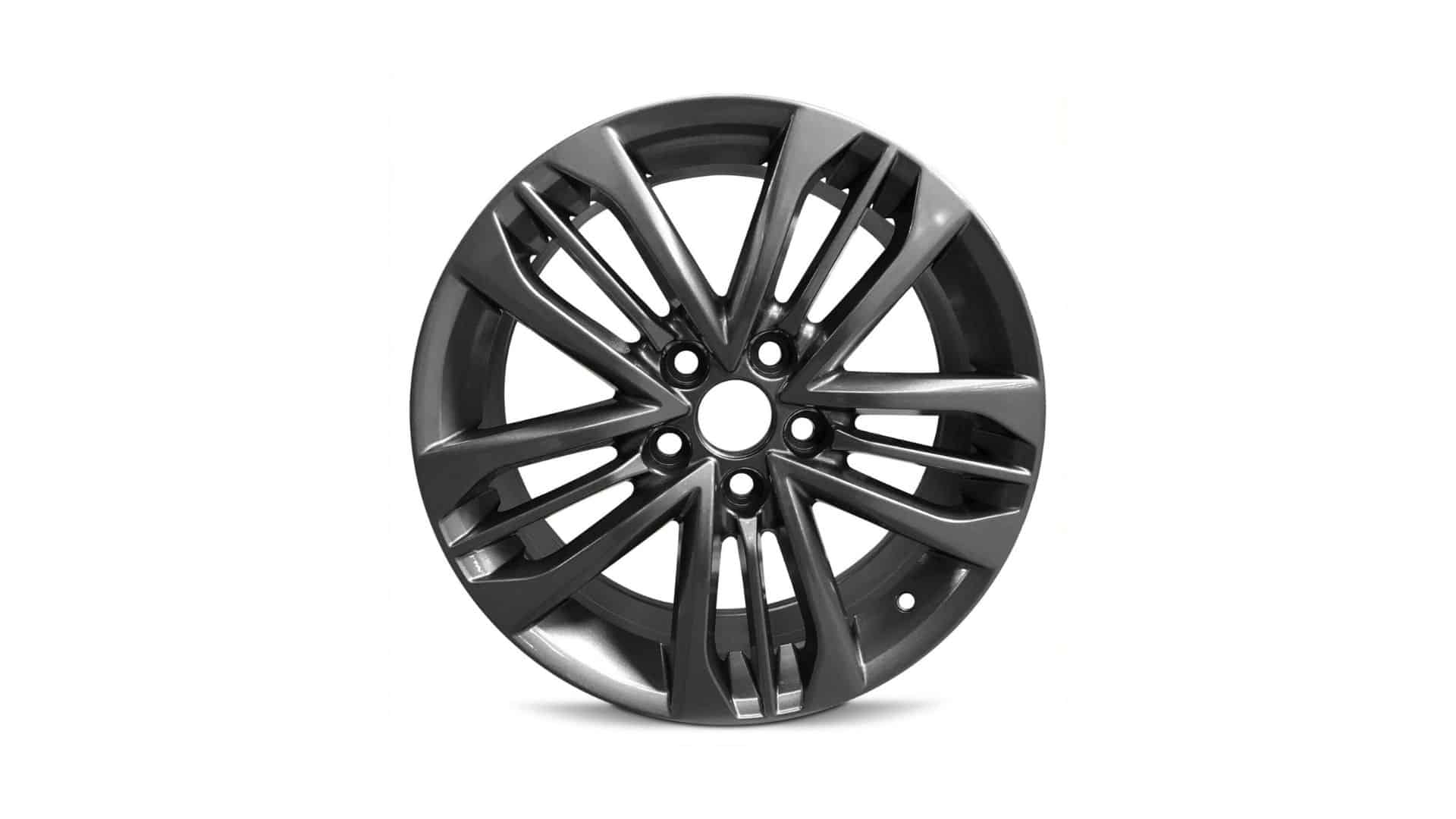
- Adhering to Toyota’s specific bolt pattern specifications is crucial for ensuring your safety and maintaining your vehicle’s compatibility.
- The most common bolt pattern found on newer Camry models is 5×114.3 mm, although alternative patterns like 5×100 mm may be used on older models or different trims.
Deviating from these recommended specifications can adversely affect your vehicle’s performance and lead to issues with wheel alignment, ultimately compromising your driving experience.
Bolt Pattern Variations In Toyota Camry
- Selecting the correct wheel bolt pattern is crucial for ensuring a proper fit and maintaining safety when replacing or upgrading your Toyota Camry’s wheels.
- Bolt patterns can vary across different Camry models, years, and trims, so it’s essential to research your vehicle’s specific requirements.
| Model Year/Trim | Bolt Pattern (mm) |
|---|---|
| Older Models | 5×100 |
| Recent Models | 5×114.3 |
Toyota Camry models’ most common bolt patterns include 5×114.3 mm and 5×100 mm.
However, variations can be even within the same model based on the year or trim specifications.
For example, some older Camry models may have a different bolt pattern than the more recent ones.
It’s advisable to consult your vehicle’s documentation or a Toyota dealership to confirm the correct bolt pattern for your specific Camry.
Practical Guide to Checking Wheel Compatibility
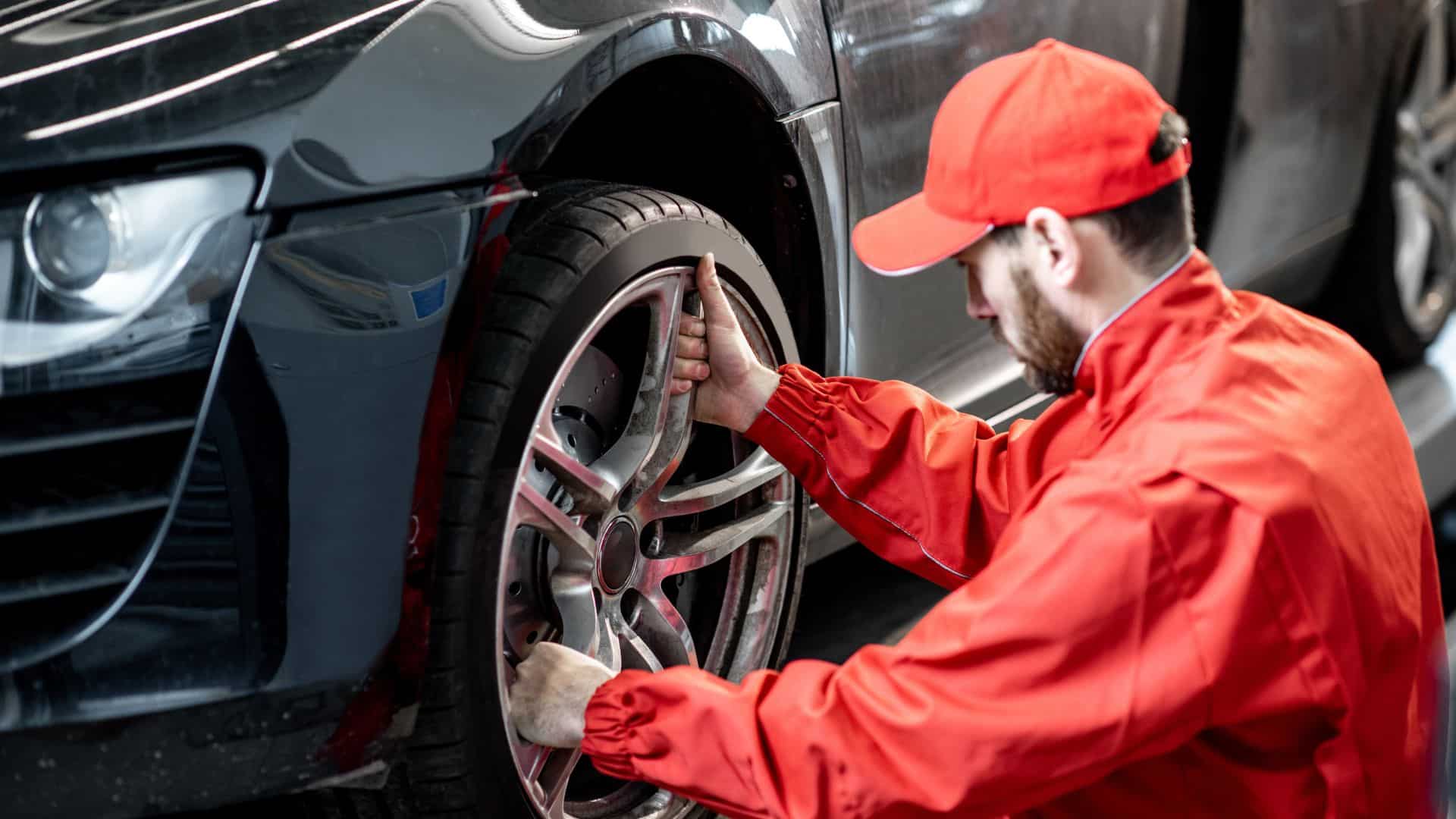
To accurately determine your Toyota Camry’s bolt pattern:
- Gather basic tools like a tape measure or a dedicated bolt pattern gauge.
- Start by locating the wheel studs on your vehicle.
- Carefully measure the distance between the centers of two adjacent studs.
- Multiply this measurement by a factor to get the pitch circle diameter (PCD), the second number in the bolt pattern specification.
Refer to your vehicle’s documentation or consult a Toyota dealership for the correct bolt pattern information.
Once you have the bolt pattern, compare it with the specifications of any new wheels you’re considering to ensure a proper fit.
Tools Needed
- Caliper or Measuring Tape: This is used to take precise measurements.
- Bolt Pattern Gauge (Optional): Designed specifically for measuring bolt patterns.
Measuring Technique
Follow these step-by-step instructions to determine your Toyota Camry’s bolt pattern accurately:
- Count Bolt Holes: Start by counting the number of bolt holes on your vehicle’s wheel hub. This will give you the first part of the bolt pattern.
- Measure Circle Diameter: Use a caliper or measuring tape to measure the distance between the centers of two adjacent bolt holes. This measurement represents the diameter of the circle formed by the bolt holes.
Interpretation of Results
- Once you have the number of bolt holes and the diameter measurement, you can determine the correct bolt pattern for your Toyota Camry.
- The bolt pattern is typically represented as two numbers separated by an “x” or a dash.
Evaluating Wheel Fit and Ensuring Optimal Performance
While the bolt pattern is crucial for determining wheel compatibility, it’s not the only consideration.
To ensure a perfect fit, you’ll also need to consider the wheel’s offset and hub bore about the bolt pattern.
Choosing wheels with an incorrect bolt pattern can lead to disastrous consequences, such as wheel detachment or uneven tire wear, which can put your safety at risk.
To avoid these pitfalls, it is highly recommended that you consult with automotive professionals when selecting aftermarket wheels for your Toyota Camry.
They can guide you through the process, considering all relevant factors, and help you make an informed decision prioritizing your safety and your vehicle’s performance.
| Consequence | Description |
|---|---|
| Uneven Tire Wear | Tires wear out quickly and unevenly. |
| Vibrations | The steering wheel or vehicle vibrates while driving. |
| Steering Issues | A car pulls to one side, reducing control. |
| Increased Fuel Usage | Higher rolling resistance leads to increased fuel consumption. |
| Suspension Damage | Misalignment stresses suspension, causing wear. |
| Potential Wheel Detachment | Loose bolts may cause a wheel to detach. |
-
Properly aligning wheels with the correct bolt pattern is crucial for your Toyota Camry’s safety and performance.
-
The bolt pattern secures the wheel to the vehicle, aligning it with the studs. This alignment allows for even weight distribution across all wheels.
Improper alignment can have serious consequences. Loose or improperly fitted wheels could result in dangerous driving conditions and potentially lead to wheel detachment, endangering you and others.
Misaligned wheels can also cause uneven tire wear and stress on suspension components, resulting in expensive repairs later on.
Prolonged use of mismatched bolt patterns could damage the wheel hub or brake components, compromising your vehicle’s safety and performance.
Basic Structure of Bolt Patterns

A bolt pattern is a numerical formula specifying the number of bolt holes or studs on a wheel and the distance across the circle formed by these holes. For example:
| Bolt Pattern | Description |
|---|---|
| 5×114.3 | Five bolt holes with a pitch circle diameter (PCD) of 114.3 mm |
| 4×100 | Four bolt holes with a PCD of 100 mm |
Bolt patterns can vary significantly. Common configurations include 4-lug and 5-lug patterns, often seen on passenger vehicles like the Toyota Camry.
To accurately identify your vehicle’s bolt pattern, you’ll need to measure the PCD using specific techniques, which we’ll discuss in the next section.
Vehicle Requirements
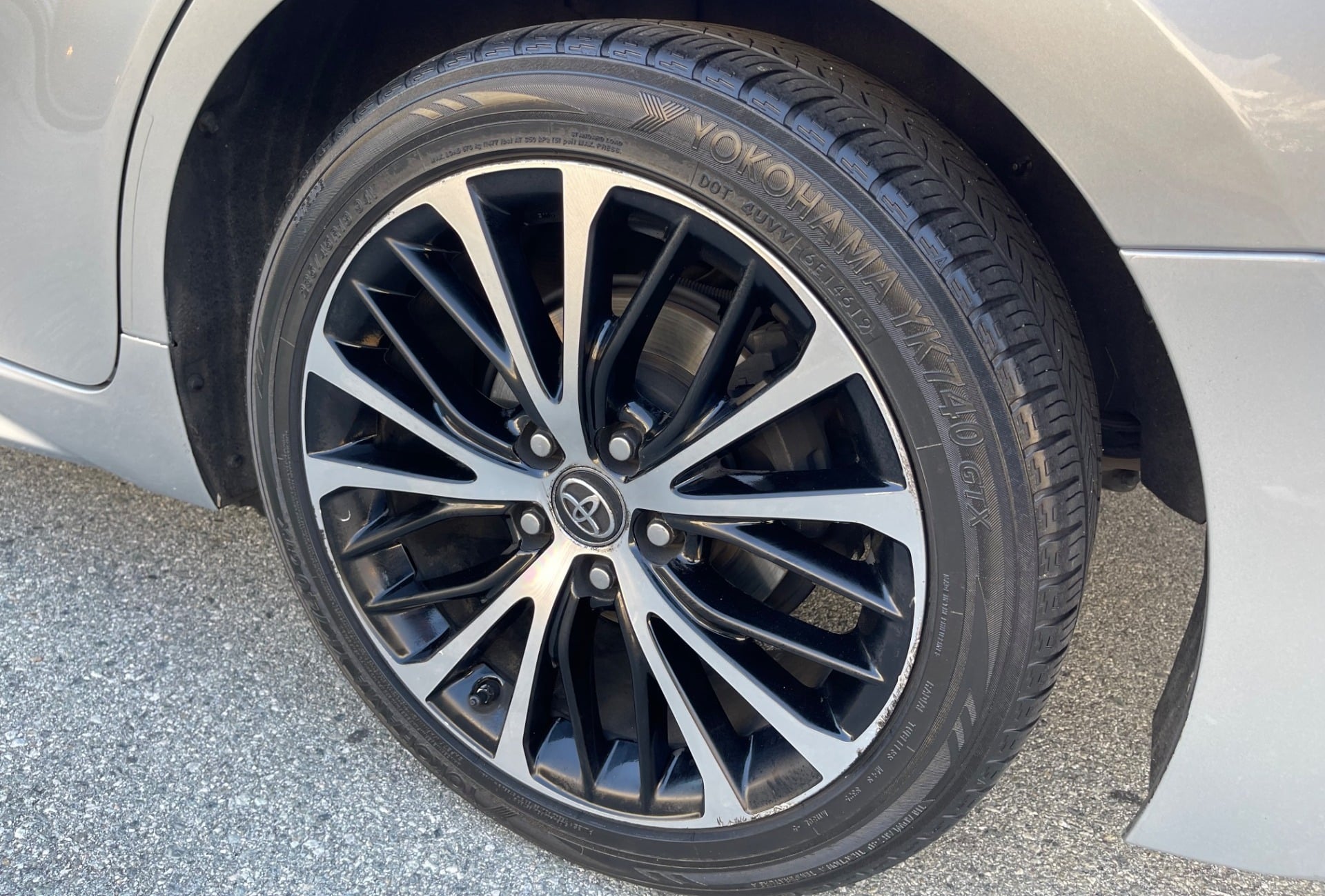
Toyota Camry models are typically equipped with a 5×114.3 or a 5×100 bolt pattern, with potential variations based on trim or manufacturing year.
Referring to Toyota’s official specifications ensures you select the correct bolt pattern for your Camry model.
This adherence guarantees compatibility with your vehicle’s braking system and other crucial components.
Following the manufacturer’s recommendations provides reliable performance and avoids compromising safety, reducing the chances of costly repairs or replacements.
Steps to Determine the Bolt Pattern
Determining the Bolt Pattern Accurately determining the bolt pattern of your Toyota Camry is crucial for ensuring proper wheel fitment and vehicle safety.
Installing wheels with an incorrect bolt pattern can lead to various issues, including:
- Uneven tire wear
- Vibrations
- Potential wheel detachment
These issues compromise your driving experience and put you at risk.
| Example | Pattern |
|---|---|
| Five Bolt Holes, 114.3 mm | 5×114.3 mm |
Some common bolt patterns in Toyota Camry models include 5×114.3 mm and 5×100 mm.
Consult your vehicle’s documentation or a Toyota dealership to confirm the correct bolt pattern for your specific model and year.
Proper measurement and selection of the correct bolt pattern are essential for ensuring your Toyota Camry’s safety and optimal performance.
Taking the time to determine your vehicle’s bolt pattern accurately can save you from potential issues down the line:
- Uneven tire wear
- Vibrations
- Wheel detachment
If you’re unsure about your measurements or have any doubts, double-check or consult with a professional automotive technician.
Their expertise can provide peace of mind and help you make an informed decision about replacing the wheels on your Toyota Camry.
Explanation of Dual-Drilled Wheels
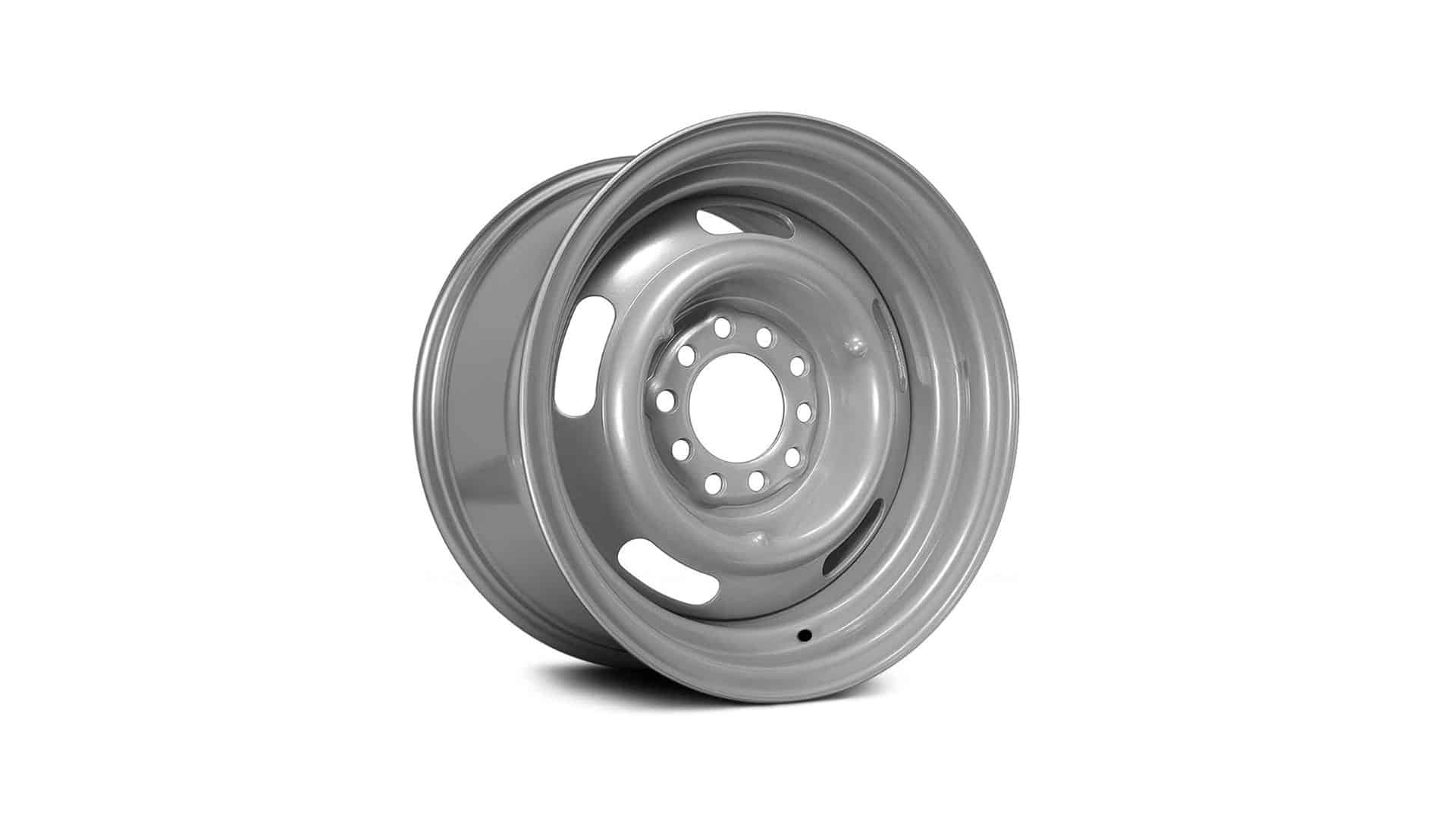
Dual-drilled wheels are designed with two different bolt patterns drilled into them, allowing for compatibility with multiple vehicle models.
Dual-drilled wheels can be a convenient option for Toyota Camry owners, especially if they plan to switch between different bolt patterns or are unsure about their vehicle’s exact specifications.
These wheels offer the flexibility to accommodate various bolt patterns, making them a practical choice for those who may need to swap wheels between different vehicles or want to future-proof their wheel setup.
Summary Table
| Aspect | Description |
|---|---|
| Importance | Proper fitment ensures safety and prevents uneven tire wear and wheel detachment. |
| Tools Needed | – Caliper or measuring tape<br/>- Bolt pattern gauge (optional) |
| Measuring Technique | 1. Count Bolt Holes: Determine the number of bolt holes.<br/>2. Measure Circle Diameter: Measure the distance between two adjacent bolt-hole centers. |
| Bolt Pattern Format | Represented as two numbers (e.g., 5×114.3 mm). |
| Common Patterns | – 5×114.3 mm<br/>- 5×100 mm |
| Confirm | Refer to the vehicle documentation or Toyota dealership to verify the pattern. |
| Conclusion | Consult a professional if uncertain to avoid issues and ensure optimal performance. |
Conclusion
Selecting the right wheel bolt pattern is essential to ensure a proper fit, optimal performance, and safety when upgrading or replacing my Toyota Camry’s wheels.
By following the steps outlined in this blog, I can confidently determine my vehicle’s bolt pattern and explore compatible wheel options.
I know that deviating from the manufacturer’s specifications can lead to issues like uneven tire wear, vibrations, or even wheel detachment, which could compromise my driving experience and safety.
If I’m ever unsure about the process or have specific concerns, I won’t hesitate to reach out to automotive professionals.
Their expertise can guide me through the process and help me make the best decision for my Camry.
Investing time in understanding my vehicle’s bolt pattern requirements might seem like a small step, but it will go a long way in improving my Camry’s appearance, performance, and overall driving satisfaction.


